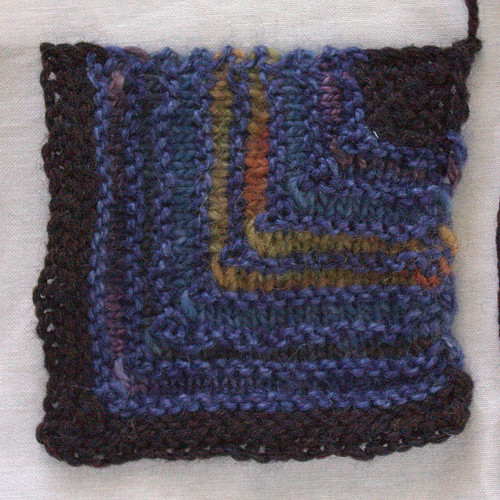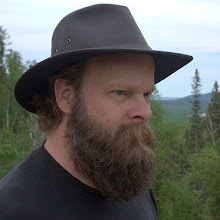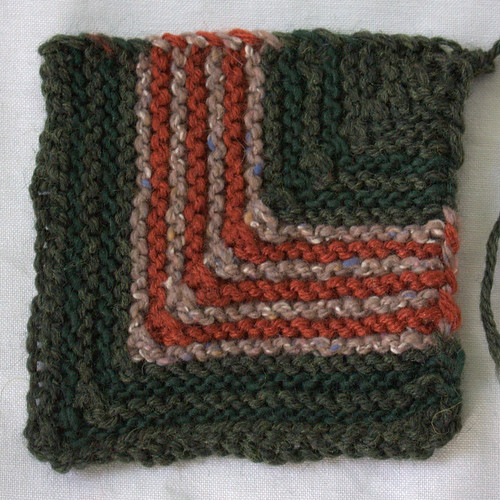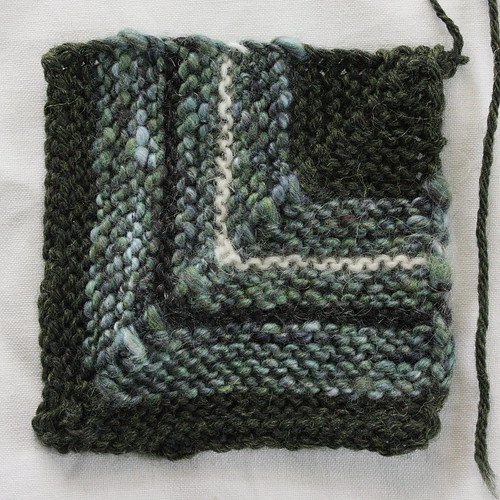
This square is for my friend, Daniel, with the emphasis on the last syllable because he is French-Canadian. I say this to distinguish him from Danny. There has been a series of important Dans in my life, but Daniel was the first.
It was fall 1996. I had come out of my marriage the previous winter, and recently ended my first unfortunate romance with a man. From the beginning I was scrupulous about meeting dates first in a public place. I had once met Daniel briefly on his way from a business meeting dressed in a suit, obviously uncomfortable.
At home I found him in his element. It was fragrant with essential oils from a diffuser, a mixture with a hint of tangerine. For dinner he served a delicious stir-fry with marinated tofu. My previous dining habits had been conservative so it was my first taste of tofu, and Daniel's preparation impressed me favourably.
One of the things I admired most was his wanderlust. He loved traveling, but not the usual places. He had visited the back country of an unsettled Central American country to find a specific kind of carpet. At a roadside checkpoint a guard put a gun to his head. Daniel stared the fellow down and survived to tell the tale. Later in our friendship he would visit the Serengeti Desert and nearly drown in a whitewater incident in southern Africa.
Our romance lasted only a few weeks, but was important in both our lives. Daniel had not come out of the closet yet, but when he heard my alarming tale about the ex-gay movement and church ostracism, he realized he had little to lose by comparison. Here are a few lines from a poem I wrote for him:
Come, set the candles all aflameWithin a few days of our meeting he came out to his friends and family; all responded positively.
to shine away your cryptic shame,
expose the good.
I was affected by Daniel's perspicuity, integrity and literacy. Although the relationship did not last, it gave me hope that the world contained men of quality. A few months later I introduced him to another friend of mine, Martin, and they mark their 12th anniversary this month.
One chilly day in front of the fireplace at Pimbletts pub, Daniel introduced me to Strongbow cider, which is now my favourite drink.
When Daniel heard about this blanket of stories I am making, he went to The Purple Purl and bought me some yarn for a square. To my great disappointment, it has gone missing in the mail. So today I made a square from five different yarns I had on hand. He loves deep blues and purples. Several of the yarns are remnants of favourites from Wellington Fibres. Another is Berroco Jasper, a shade named Mochica Blue after an ancient civilization in Peru. The burgundy border is one of the Cascade yarns I'm using to thread unity through the blanket.
The autumn-coloured yarn from Wellington Fibres presents contrast as tribute to our long friendship. Daniel knows my favourite complimentary colours are blue-purple and orange-yellow. This morning while picking yarns for the square I opened a bottle of sandalwood oil, and the scent immediately drew my eyes to this yarn. Daniel sometimes wore sandalwood.




